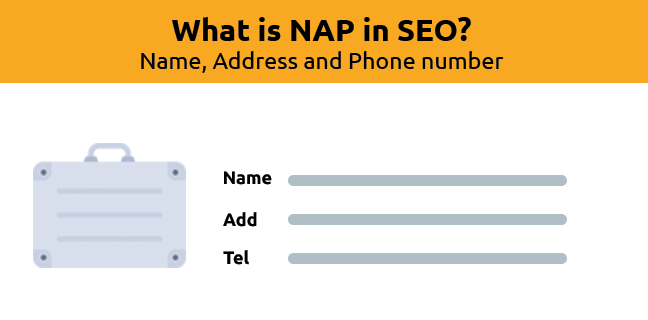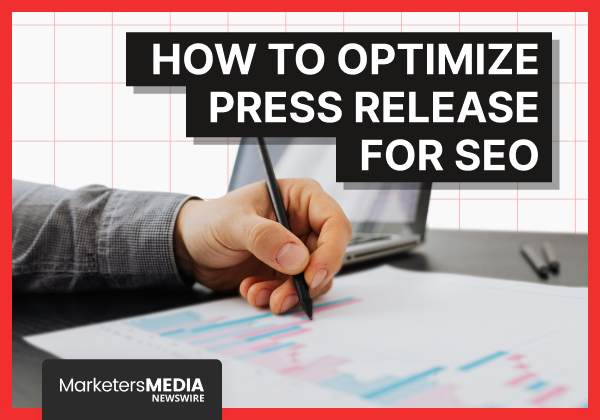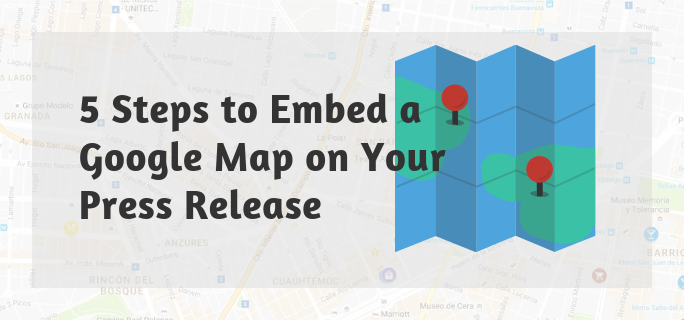Imagine that you run a small mom-and-pop store. How do you get more customers?
Better customer service?
Quality products?
Cute interior design?
No. All of that won’t matter if no one knows the name of your store, where your store is located, and how to reach you - phone or email.
Which is where the NAP in SEO comes in.
Search engines like Google take your NAP into account when displaying location-based searches, such as the ever-popular “near me” searches. FYI, to quote a statistic from Chat Meter, “near me” or “close by” searches have grown more than 900% from 2016 to 2018.
How to create a correct NAP
1. Display your business Name, Address, and Phone prominently on your website.
Most businesses provide their business name, address, and a contact number or email on their website or social media pages such as Facebook or Instagram.
And you should too.
The most natural way to do that is to fit it in your website’s footer.
Here’s a good example of how to clearly display the business Name, Address, and Phone number on your website.
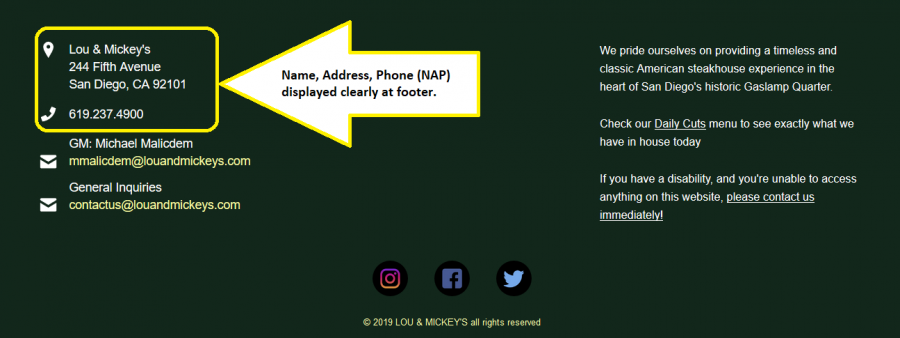
You can always display the NAP information in other parts of your website. Perhaps the header or a separate contact us page. But having it at the footer makes for a more consistent and prominent display.
Bottom line: Try to make sure the NAP is visible on the homepage, and preferably on every other page of your website as well.
2. Claim your Google My Business (GMB) listing.
There’s no doubt that information we get from Google is a big influence on our everyday life decisions, and that includes which stores to visit.
Infact, 88% of those who Googled for a local business actually visited them within 24 hours (source
Now, imagine the customers you’ve lost just because your business didn’t show up on Google when they made a search.
To avoid that, you need to leverage the huge number of users that Google boasts.
Do you know what is a Google My Business listing?
If you’re not familiar with Google My Business it’s basically a business profile that is submitted to Google.
And when someone searches for your business, one whole column of knowledge graph showcasing information about your business will appear at the side.
Something like this.

Pretty cool huh?
It is really useful for those who are thinking about visiting the restaurant.
But this is only possible if you have claimed your Google My Business listing and provided the information.
So, how do you claim your Google My Business listing?
But it’s actually pretty straightforward. Just visit https://www.google.com/business/ and click on the green start now button. Google will guide you through the process after that.
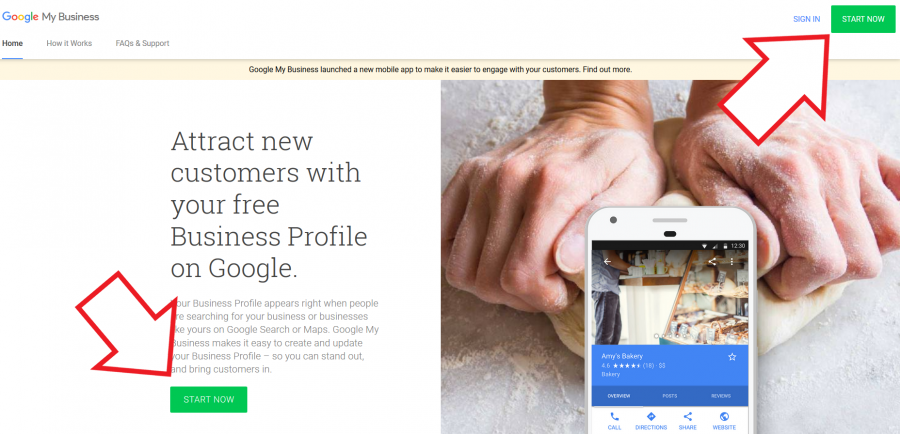
You can easily spot the START NOW buttons to start the process of creating a GMB listing for your business.
The most important part of registering your listing is this:
Make sure that your business Name, Address and Phone is the same as the one on your website.
If you’re Lou & Mickey’s on your website then you shouldn’t be Lou and Mickey’s, or Lou & Mickey (where’s the -’s).
Just one single discrepancy may bring you problems later.
The same goes for your address and phone. Make sure they are exactly the same with your website, your Facebook page, Twitter or whatever sites you have those information on.
Basically you want your NAP to be 100% consistent across the internet.
3. Create structured and unstructured citations across the web.
You can create structured citations on online directories such as Acxiom, Citygrid, Apple Maps, Foursquare, Superpages, Yelp, and Bing.
Again, make sure that the Name, Address, and Phone number is consistent across all these sites.
If you’re in the US, head over to this article by BrightLocal to review and compare a list of citation services available.
Creating structured citation on such sites used to be crucial in local SEO. Because that’s where Google got their information from, Google relied on structured citations to provide answers for location-based search.
But that is in the past. Search engines, especially Google, have been getting better at associating brand mentions, unstructured citations, and the brand name.
Since the debut of Google Knowledge Graph - think of it as a library of information Google keeps to understand the world better- in INSERT YEAR, Google’s been doing a progressively good job of grasping unstructured citations.
Notable local SEO David Mihm mentioned that a traditional press release is now a better investment for businesses.
In terms of citations, Google’s gotten so good at associating brand mentions in its Knowledge Graph, it seems to me that unstructured citations — more akin to traditional PR — are a far better investment for businesses of all sizes who are looking to influence Google’s view of their brand prominence. - David Mihm, VP of Product Strategy at ThriveHive
Unstructured citations come in a lot of ways, such as...
- Press release
- Blog post
- News article
- Social Media Post
- Forum thread
- Comment
- Review
Using press release for your local business’s NAP.
Modern digital press releases are used for a couple of reasons:
- To make an official announcement on your business.
- To serve as a pitch to draw journalists’ attention for a news cover.
- Market your business and products.
- Online reputation control.
- Feed information to search engines.
That last point - feeding information to search engines - is the part that can be used to build your NAP.
Now, you see, most press releases require the business sending out the release to include their contact information.
Which makes perfect sense because the original purpose of a press release is to pitch news ideas to journalists. If you want them to cover your story, it’s only natural that you want them to be able to contact you. Thus the contact information fields.
And the contact information fields include, you guessed it, Name, Address, and Phone number.
Voila! The recipe to build your local business NAP and an online presence all in one.
Based on the service you choose, there are some free press release services out there that will put your press release on perhaps 5 sites.
Of course, you can also find upper-scale services that send your press release to more premium and branded outlets such as ABC, CBS, FOX, and even Reuters.
Based on how much information about your business is already out there on the web, you may adjust the scale of the press release service you need. Perhaps try a basic service that sends your press release out to a few media sites, and if that works well, try going more upscale with a service that targets hundreds of media sites. That’s your call.
Example of a press release appearing in the result for a NAP search.
To be very clear, using a press release to feed NAP citations to search engines does not mean the press release will appear as an answer when searches look for your NAP.
What it does is help Google better understand what your NAP is, thus creating the appropriate answer when NAP search is conducted.
And that means you may get results such as:
A direct results:
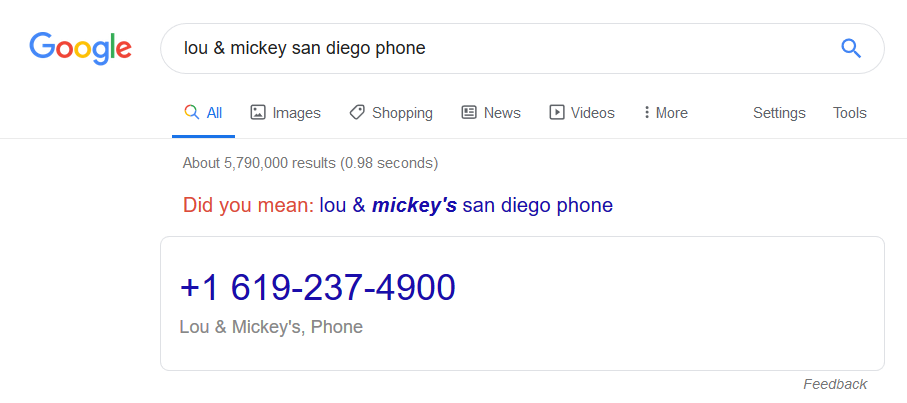
A local pack:

I did come across a case where a press release itself appears when I’m searching for the phone number.
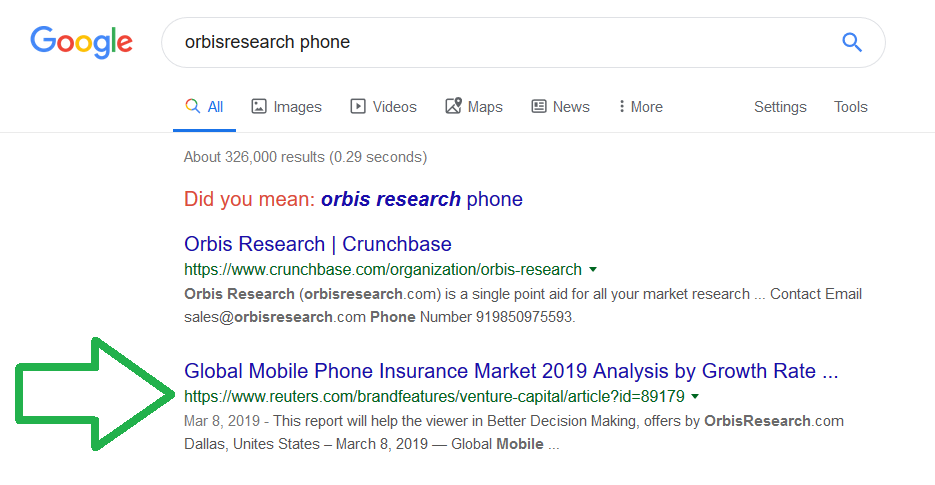
And when I click into it:
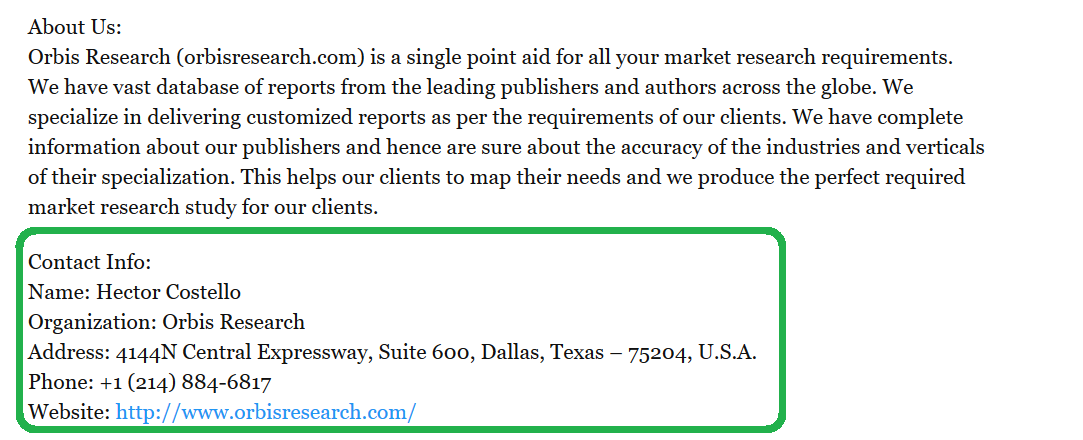
But this is a rare case where the word “phone” was directly featured as the headline for the page.
And Google is unpredictable, let us know how you’re presented with the search result for contact information, that can be fun to see!
Conclusion
NAP stands for your business’s Name, Address, and Phone number. Which are a crucial part for local SEO - getting your business discoverable online through search engines such as Google.
In order to create correct NAP - to get your business’ contact information out there - you should:
1. Display your NAP prominently and consistently across all the online profiles you own such as website, Facebook page, Twitter account, Instagram account etc.
2. Claim and update your Google My Business listing by visiting https://www.google.com/business/.
3. Create structured and unstructured NAP citations.
Structured citations can be made on sites such as: Acxiom, Citygrid, Apple Maps, Foursquare, Superpages, Yelp and Bing.
Unstructured citations includes being mentioned in: blog posts, comments, forums and press releases.
4. Unstructured citations are more useful than structured citations for Google compared to years ago and press release is a good way to get your NAP citations spread out fast and efficiently.
Free Press Release Template
Tell us where to send your PDF:
